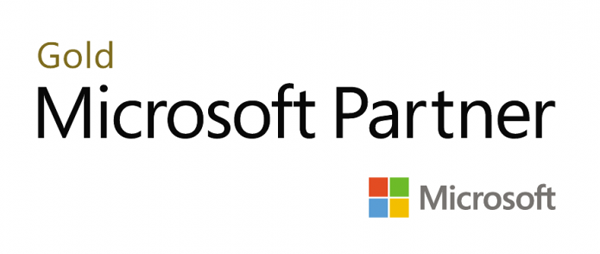Querying Data with Transact-SQL 2016 , On Demand 20761
- Seminar
- E-Learning
- Zurzeit keine Termine
- 24 Unterrichtseinheiten
- Teilnahmebescheinigung
Seminarnummer: 29445
The main purpose of this On Demand online course is to give students a good understanding of the Transact-SQL language which is used by all SQL Server-related disciplines; namely, Database Administration, Database Development and Business Intelligence.
Details zu MOC On Demand Trainings finden Sie unter den Hinweisen weiter unten.
Details zu MOC On Demand Trainings finden Sie unter den Hinweisen weiter unten.
Nutzen
After completing this course, students will be able to:
- Describe the basic architecture and concepts of Microsoft SQL Server 2016.
- Understand the similarities and differences between Transact-SQL and other computer languages.
- Write SELECT queries
- Query multiple tables
- Sort and filter data
- Describe the use of data types in SQL Server
- Modify data using Transact-SQL
- Use built-in functions
- Group and aggregate data
- Use subqueries
- Use table expressions
- Use set operators
- Use window ranking, offset and aggregate functions
- Implement pivoting and grouping sets
- Execute stored procedures
- Program with T-SQL
- Implement error handling
- Implement transactions
Zielgruppe
This course is intended for Database Administrators, Database Developers, and Business Intelligence professionals. The course will very likely be well attended by SQL power users who are not necessarily database-focused; namely, report writers, business analysts and client application developers.
Anforderungen
- Working knowledge of relational databases.
- Basic knowledge of the Microsoft Windows operating system and its core functionality.
Inhalte
Module 1: Introduction to Microsoft SQL Server 2016
This module introduces SQL Server, the versions of SQL Server, including cloud versions, and how to connect to SQL Server using SQL Server Management Studio.
Lessons
After completing this module, you will be able to:
Module 2: Introduction to T-SQL Querying
This module introduces the elements of T-SQL and their role in writing queries, describes the use of sets in SQL Server, describes the use of predicate logic in SQL Server, and describes the logical order of operations in SELECT statements.
Lessons
After completing this module, you will be able to:
Module 3: Writing SELECT Queries
This module introduces the fundamentals of the SELECT statement, focusing on queries against a single table.
Lessons
After completing this module, you will be able to:
Module 4: Querying Multiple Tables
This module explains how to write queries which combine data from multiple sources in SQL Server. The module introduces the use of JOINs in T-SQL queries as a mechanism for retrieving data from multiple tables.
Lessons
After completing this module, you will be able to:
Module 5: Sorting and Filtering Data
This module explains how to enhance queries to limit the rows they return, and to control the order in which the rows are displayed. The module also discusses how to resolve missing and unknown results.
Lessons
After completing this module, you will be able to:
Module 6: Working with SQL Server 2016 Data Types
This module explains the data types SQL Server uses to store data. It introduces the many types of numeric and special-use data types. It also explains conversions between data types, and the impor
This module introduces SQL Server, the versions of SQL Server, including cloud versions, and how to connect to SQL Server using SQL Server Management Studio.
Lessons
- The Basic Architecture of SQL Server
- SQL Server Editions and Versions
- Getting Started with SQL Server Management Studio
After completing this module, you will be able to:
- Describe the architecture and editions of SQL Server 2012.
- Work with SQL Server Management Studio.
Module 2: Introduction to T-SQL Querying
This module introduces the elements of T-SQL and their role in writing queries, describes the use of sets in SQL Server, describes the use of predicate logic in SQL Server, and describes the logical order of operations in SELECT statements.
Lessons
- Introducing T-SQL
- Understanding Sets
- Understanding Predicate Logic
- Understanding the Logical Order of Operations in SELECT statements
After completing this module, you will be able to:
- Describe the elements of T-SQL and their role in writing queries
- Describe the use of sets in SQL Server
- escribe the use of predicate logic in SQL Server
- Describe the logical order of operations in SELECT statements
Module 3: Writing SELECT Queries
This module introduces the fundamentals of the SELECT statement, focusing on queries against a single table.
Lessons
- Writing Simple SELECT Statements
- Eliminating Duplicates with DISTINCT
- Using Column and Table Aliases
- Writing Simple CASE Expressions
After completing this module, you will be able to:
- Write simple SELECT statements.
- Eliminate duplicates using the DISTINCT clause.
- Use column and table aliases.
- Write simple CASE expressions.
Module 4: Querying Multiple Tables
This module explains how to write queries which combine data from multiple sources in SQL Server. The module introduces the use of JOINs in T-SQL queries as a mechanism for retrieving data from multiple tables.
Lessons
- Understanding Joins
- Querying with Inner Joins
- Querying with Outer Joins
- Querying with Cross Joins and Self Joins
After completing this module, you will be able to:
- Describe how multiple tables may be queried in a SELECT statement using joins.
- Write queries that use inner joins.
- Write queries that use outer joins.
- Write queries that use self-joins and cross joins.
Module 5: Sorting and Filtering Data
This module explains how to enhance queries to limit the rows they return, and to control the order in which the rows are displayed. The module also discusses how to resolve missing and unknown results.
Lessons
- Sorting Data
- Filtering Data with Predicates
- Filtering with the TOP and OFFSET-FETCH Options
- Working with Unknown Values
After completing this module, you will be able to:
- Filter data with predicates in the WHERE clause.
- Sort data using ORDER BY.
- Filter data in the SELECT clause with TOP.
- Filter data with OFFSET and FETCH.
Module 6: Working with SQL Server 2016 Data Types
This module explains the data types SQL Server uses to store data. It introduces the many types of numeric and special-use data types. It also explains conversions between data types, and the impor
Hinweise
MOC On Demand Trainings sind original Microsoft Trainings, in denen Sie zeit- und ortsungebunden lernen können.
Diese Trainings enthalten:
- Zugang zum offiziellen Microsoft Video on Demand Kurs für 90 Tage ab dem ersten Zugriff.
- Einen Lab-Online-Zugang für praktische Übungen, der ab Kauf 6 Monate gültig ist.
- Eine originale MOC Schulungsunterlage in digitaler Form, wie sie auch in den Live-Trainings eingesetzt wird.


